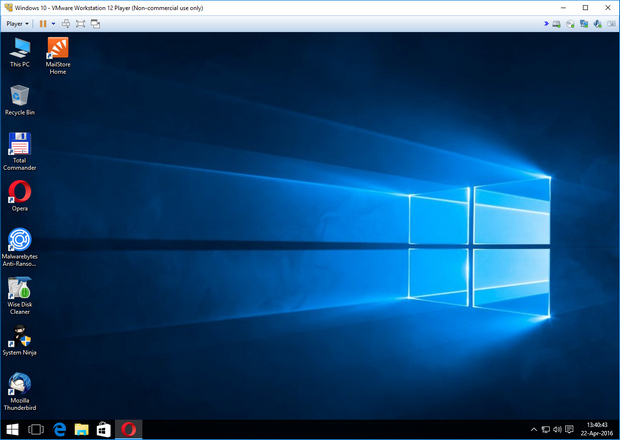 VMware heeft versie 12.5.1 van Workstation Player uitgebracht. Player is gratis software waarmee virtuele machines kunnen worden gemaakt en gedraaid. Voor commercieel gebruik wordt echter wel een vergoeding gevraagd. Het is simpel gezegd een vereenvoudigde uitvoering van andere VMware-producten, zoals Workstation Pro, Server en ESX Server. Ook de virtual machines van Microsoft Virtual PC en Symantec LiveState Recovery-disks worden ondersteund. Daarnaast kunnen verschillende voorgeïnstalleerde virtual machines via deze pagina worden binnengehaald, zoals Debian, Ubuntu en Fedora. Zoals de kleine sprong in versienummer doet vermoeden, zijn er in deze release enkele kleine problemen verholpen.
VMware heeft versie 12.5.1 van Workstation Player uitgebracht. Player is gratis software waarmee virtuele machines kunnen worden gemaakt en gedraaid. Voor commercieel gebruik wordt echter wel een vergoeding gevraagd. Het is simpel gezegd een vereenvoudigde uitvoering van andere VMware-producten, zoals Workstation Pro, Server en ESX Server. Ook de virtual machines van Microsoft Virtual PC en Symantec LiveState Recovery-disks worden ondersteund. Daarnaast kunnen verschillende voorgeïnstalleerde virtual machines via deze pagina worden binnengehaald, zoals Debian, Ubuntu en Fedora. Zoals de kleine sprong in versienummer doet vermoeden, zijn er in deze release enkele kleine problemen verholpen.
Resolved IssuesKnown Issues
- When you install the VMware VIX API files, some files install to C:\, even when you select the default install path of C:\Program Files (x86)\VMware\VMware VIX. This issue is resolved.
- Trying to execute vmrun commands on a RHEL 6.8 or CentOS 6.8 host machine, results in errors. This issue is resolved.
- After VMware Workstation Player is uninstalled, the following driver-related files remain on the Windows host operating system: In C:\Program Files\Common Files\VMware\Drivers\vmci\device: vmciver.dll This issue is resolved.
- Virtual Machines running Linux kernel version 4.7 or above may crash during installation or during power-on with a crash in the intel_powerclamp driver. This issue has been reported with Ubuntu 16.10, but it is a generic Linux kernel issue.
Workaround: VMware is working with the OS vendors to have them fix their respective kernels. Until a fix is available, you can blacklist the intel_powerclamp driver so that the buggy code doesn't get loaded.
To blacklist the driver:
Add the kernel command-line option modprobe.blacklist=intel_powerclamp to the guest OS's default grub configuration or add it directly at the grub menu during boot.- After VMware Workstation Player is uninstalled, the following driver-related files remain on the Windows host operating system: In C:\Windows\System32\drivers:
hcmon.sys
vmci.sys
vmx86.sys
vmkbd.sys
in case Enhanced Keyboard Driver was installed.
Workaround: Navigate to C:\Windows\System32\drivers and delete them manually.


:fill(white):strip_exif()/i/2004010966.jpeg?f=thumbmedium)